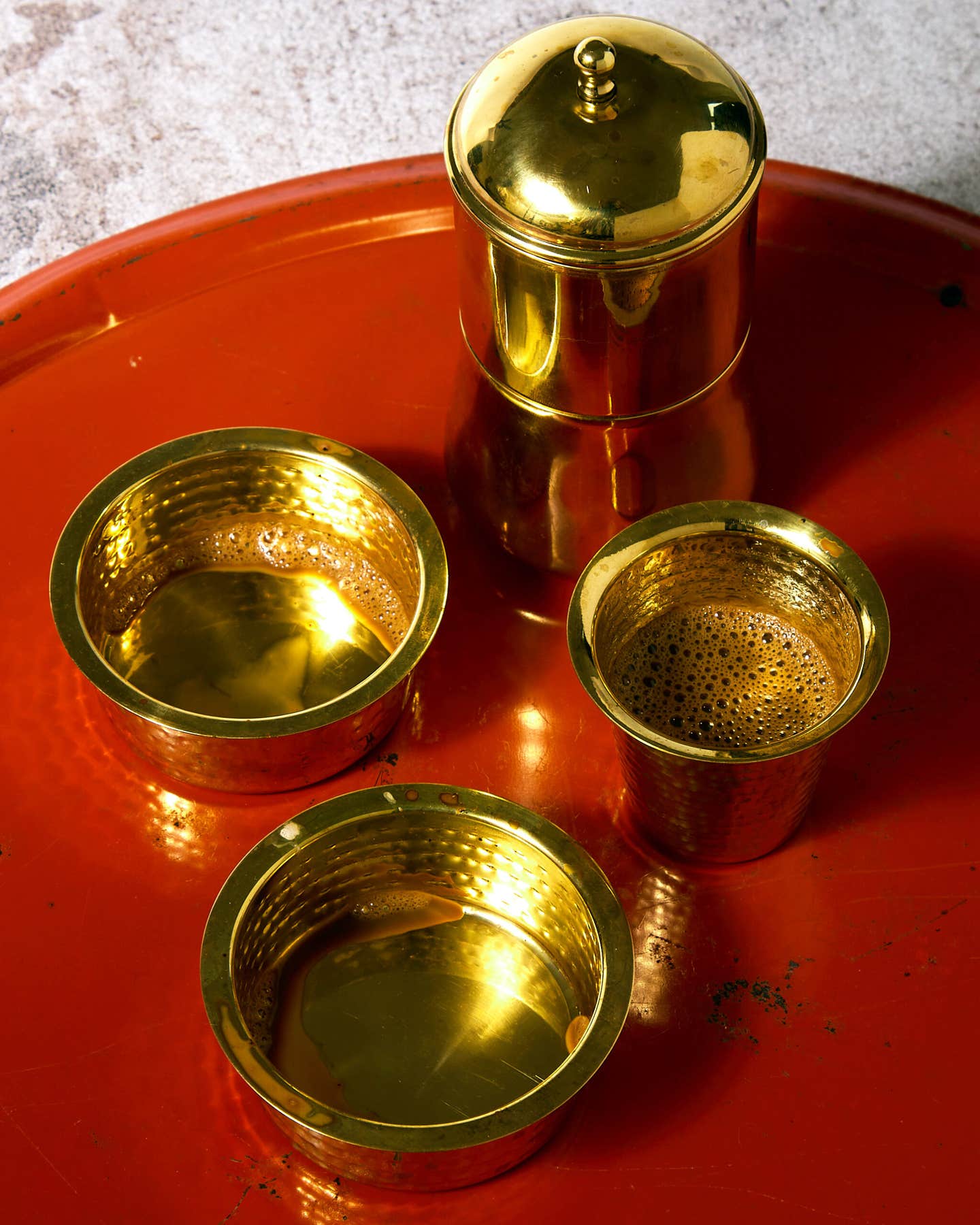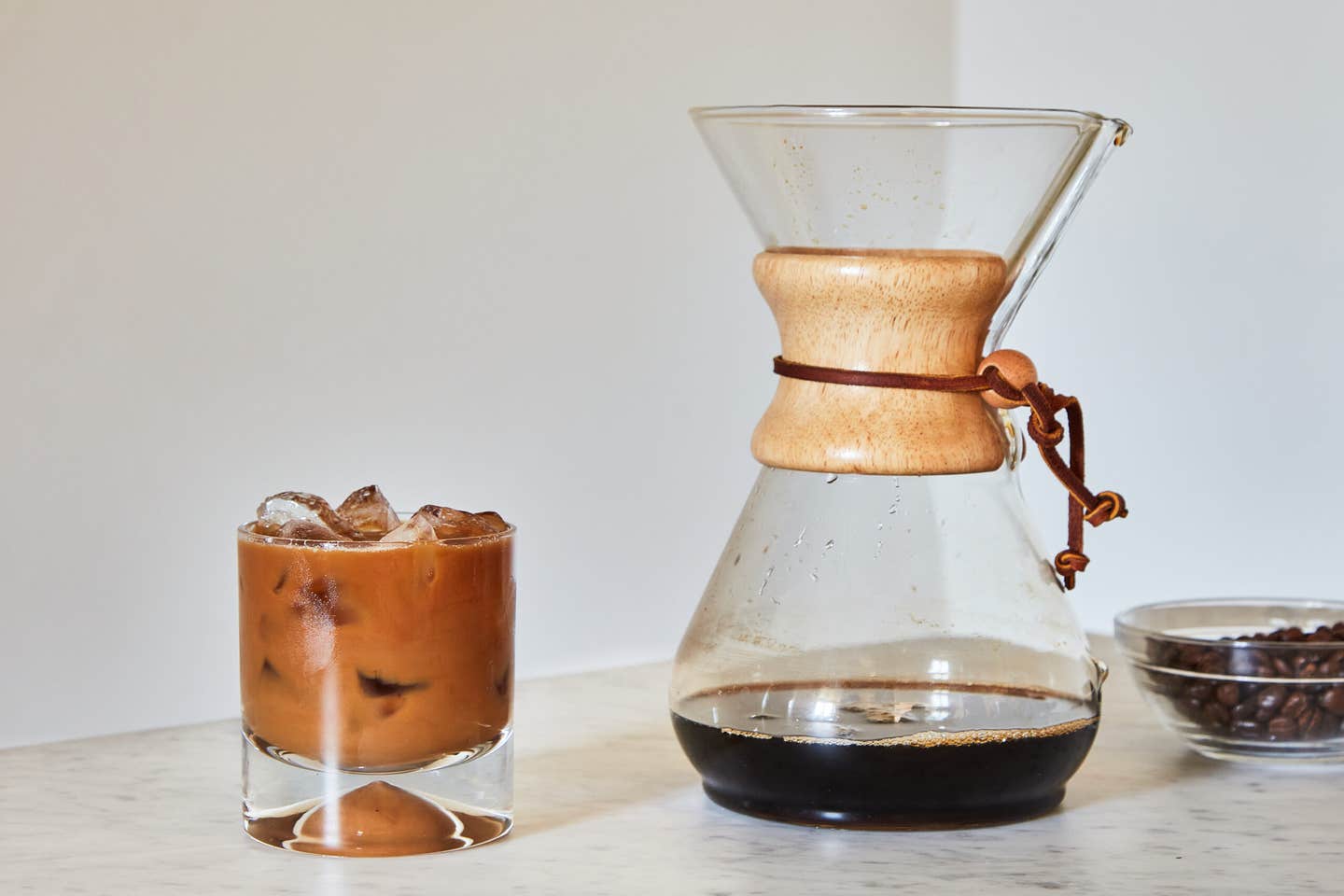
How To Make Cold Brew That’s Easy and Cafe-Level Good
Bonus: It’s more caffeinated than your standard iced coffee.
Cold brew has been popular for more than a decade, but most cold brew drinkers don’t realize how easy—and economical—it is to make at home. The process is simple: Steep coffee grounds in room-temperature water for 12–24 hours, strain out the solids, then dilute the liquid with a splash of water and pour over ice.
The resulting beverage is fruitier, less acidic, and more caffeinated than standard iced coffee, which is made by pouring hot liquid over ice—and much more forgiving. Unlike, say, brewing coffee in a French press, which requires a timer (lest it over-steep), cold brew gives you a 12-hour window to remember to strain it. “If you’ve ever tasted coffee that’s sat out for too long, it’s bitter and unpleasant, because the heat continues to extract flavor from the grounds. Cold brew steeps much more slowly. You can literally set it and forget it,” says Emily Rosenberg, director of education and training operations at cold brew mecca Stumptown Coffee Roasters in Portland. Indeed, a pitcher of cold brew will keep in the fridge for over a week.
Of course, coffee enthusiasts have found a way to make cold brew seem complicated. There is a dizzying array of cold brew coffee makers. Some rely on immersion (steeping the grounds in something porous like a removable metal sieve), while others employ a pour-over technique or automate things with electric power. While we love the Ovalware Airtight Cold Brew Maker for its easy cleanup and sleek aesthetics, we’ve made equally sublime cold brew using a bargain-bin pitcher or jar, a sieve, and coffee filters.
The bottom line? Don’t overcomplicate things. “Coffee can be intimidating because there are a million Youtube videos and esoteric blog posts and expensive pieces of equipment out there,” says Rosenberg. “None of that should be a barrier to experimenting.” So without further ado, here is our failsafe formula for making café-grade cold brew at home.
What You Need
- Large pitcher or Mason jar
- Fine-mesh sieve
- Coffee filters
- Digital scale
- Chemex Pour-Over 6- or 8-Cup Glass Coffee Maker (optional)
- 4-Cup Measuring Cup
- Oxo Coffee Grounds Cleaning Scoop (optional)
Before You Begin
We like making cold brew in a Chemex because its filters do a great job at removing all grit from the liquid, but you can achieve a similarly smooth mouthfeel by straining the steeped coffee through a fine-mesh sieve lined with either cheesecloth or a couple of standard coffee filters. If you find yourself making cold brew regularly, consider investing in the Ovalware RJ3 Brewing Glass Carafe, which cuts down on cleanup.
Step 1: Coarsely grind a half a bag (170 grams) of your favorite coffee.
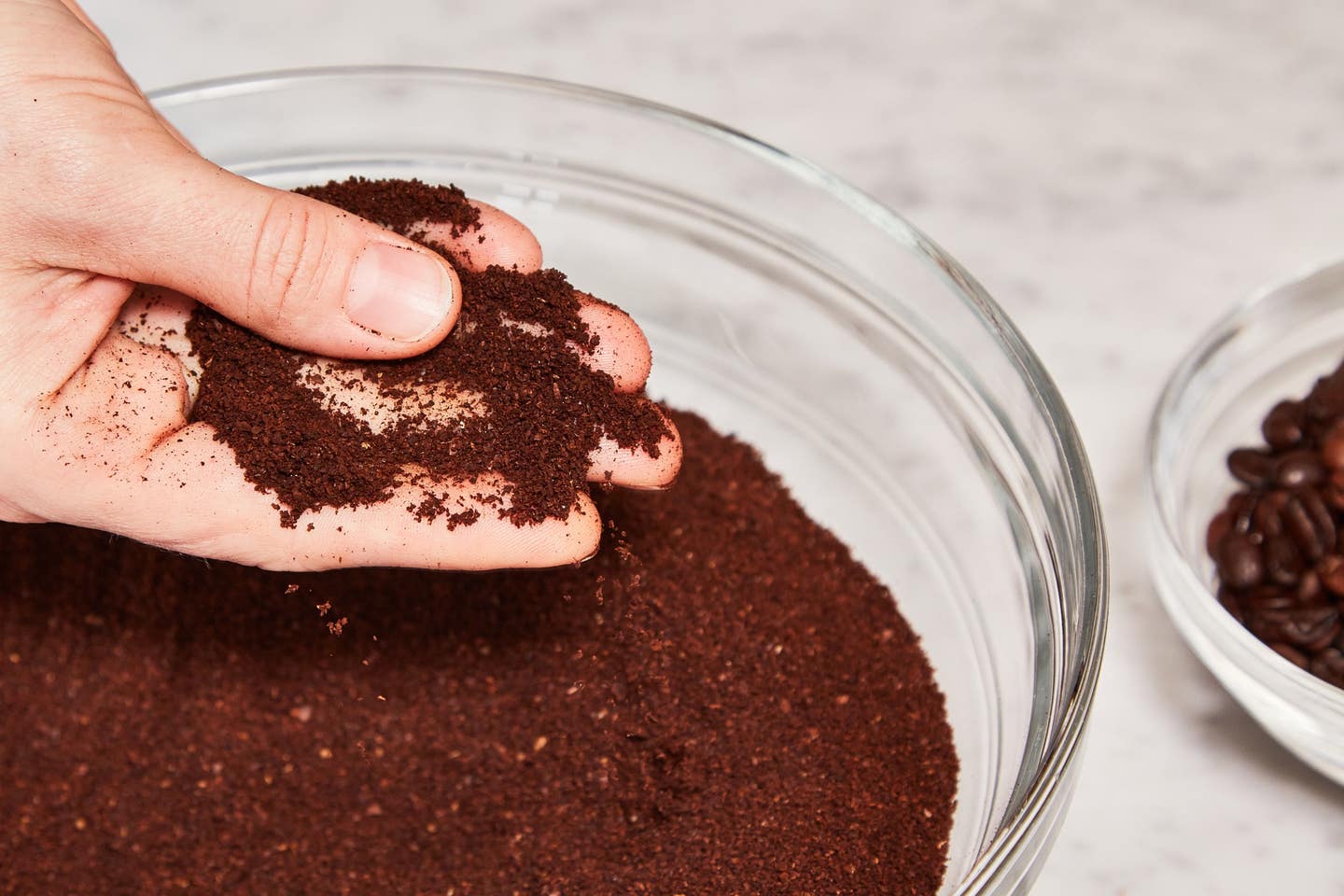
Any type of coffee can be used for cold brew—reach for what you like (light roast, medium roast, etc.). Using a burr grinder, grind the coffee to the texture of coarse sand, or have your local coffee shop do this for you.
Step 2: Combine the coffee and 850 milliliters of water and stir.
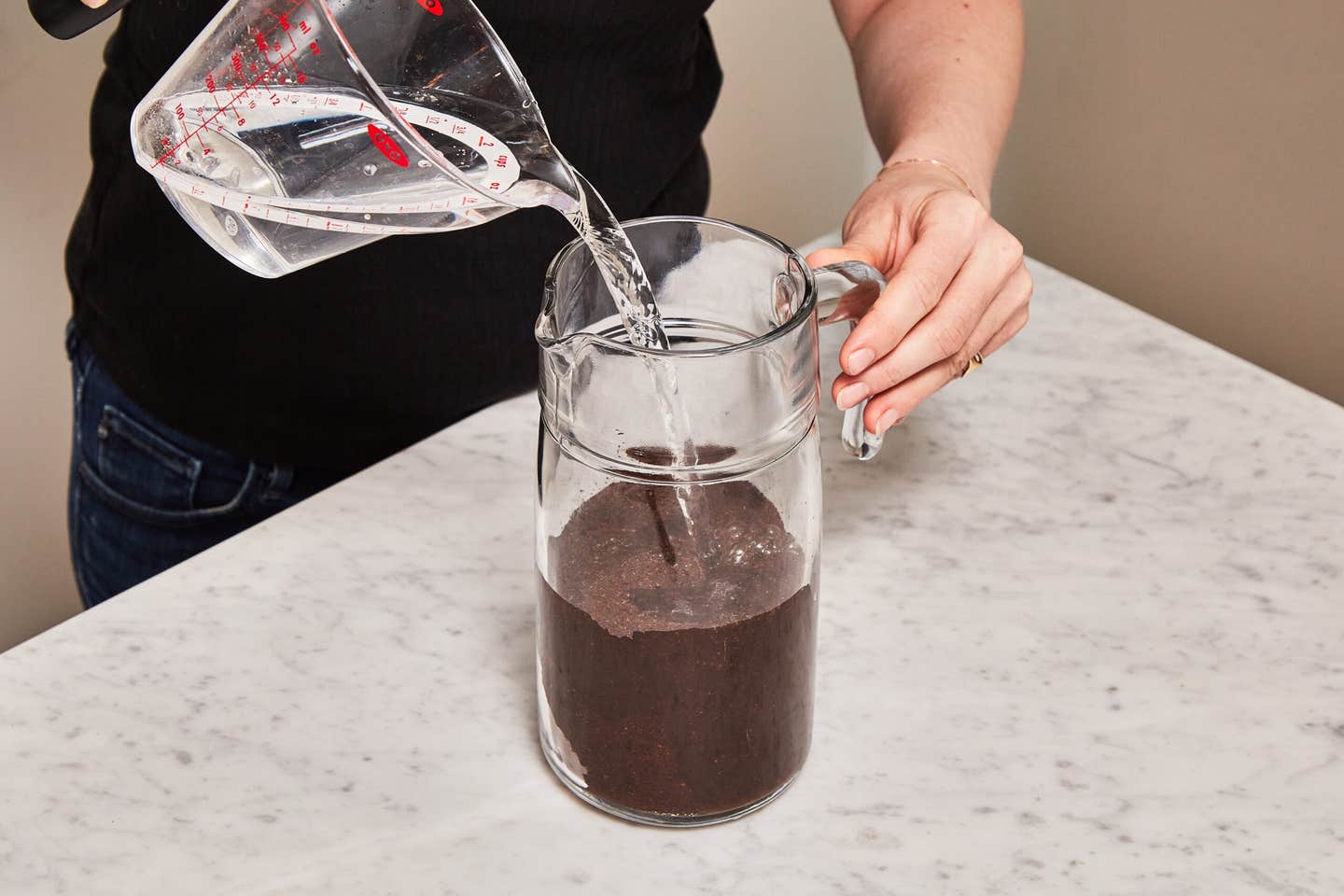
Into a glass or plastic vessel (a large French press works well), pour 850 milliliters (3½ cups) of room-temperature water, then add the ground coffee and stir until no dry bits remain. Cover tightly with a lid or plastic wrap. Note: Because the only ingredients in cold brew are coffee and water, it’s important to use neutral-tasting water. If your tap water has a mineral taste, spring for bottled.
Step 3: Steep for approximately 16 hours.
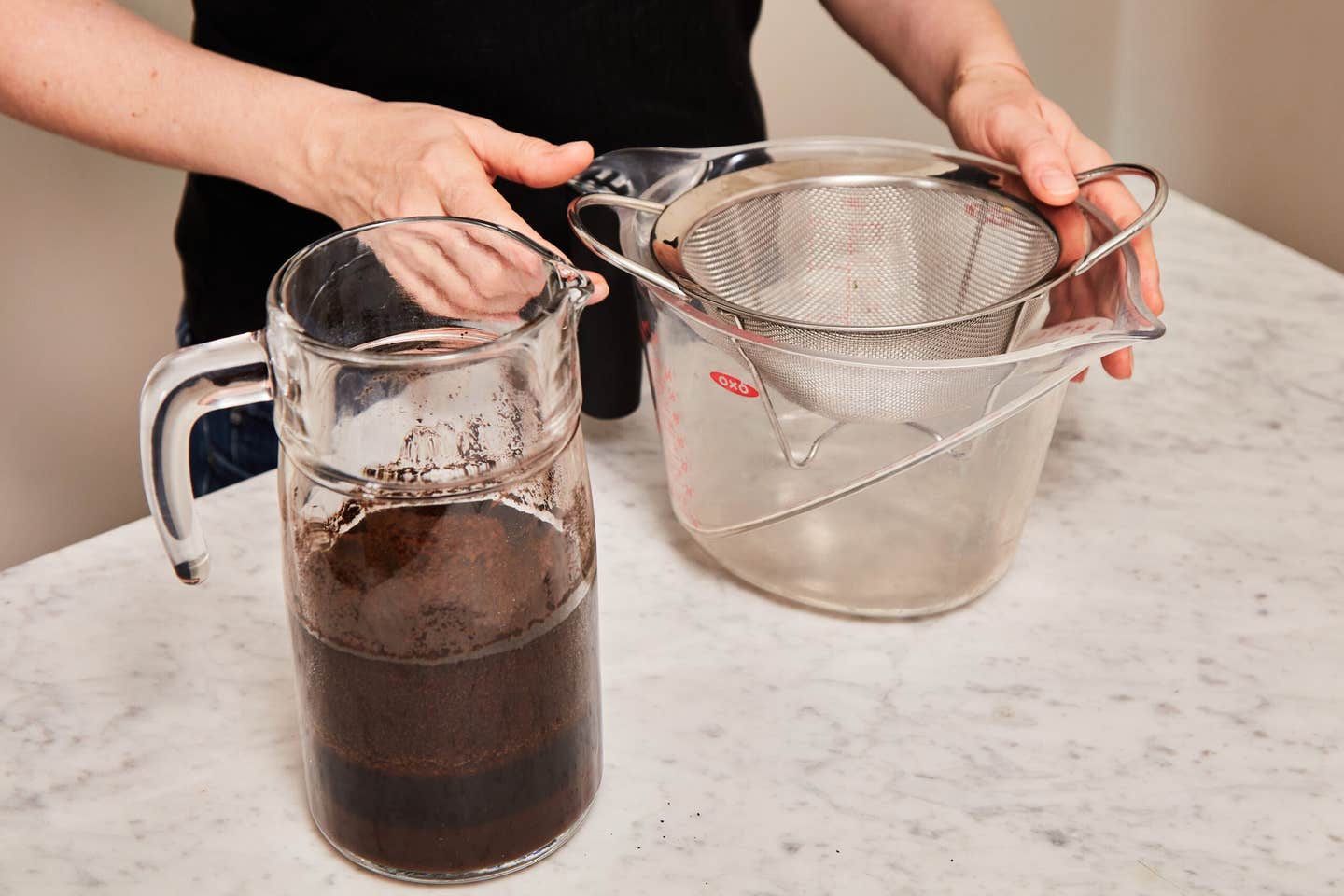
Let the liquid steep at room temperature undisturbed for 12–24 hours. Sixteen hours is a good middle ground.
Step 4: Strain to remove as much sediment as possible.
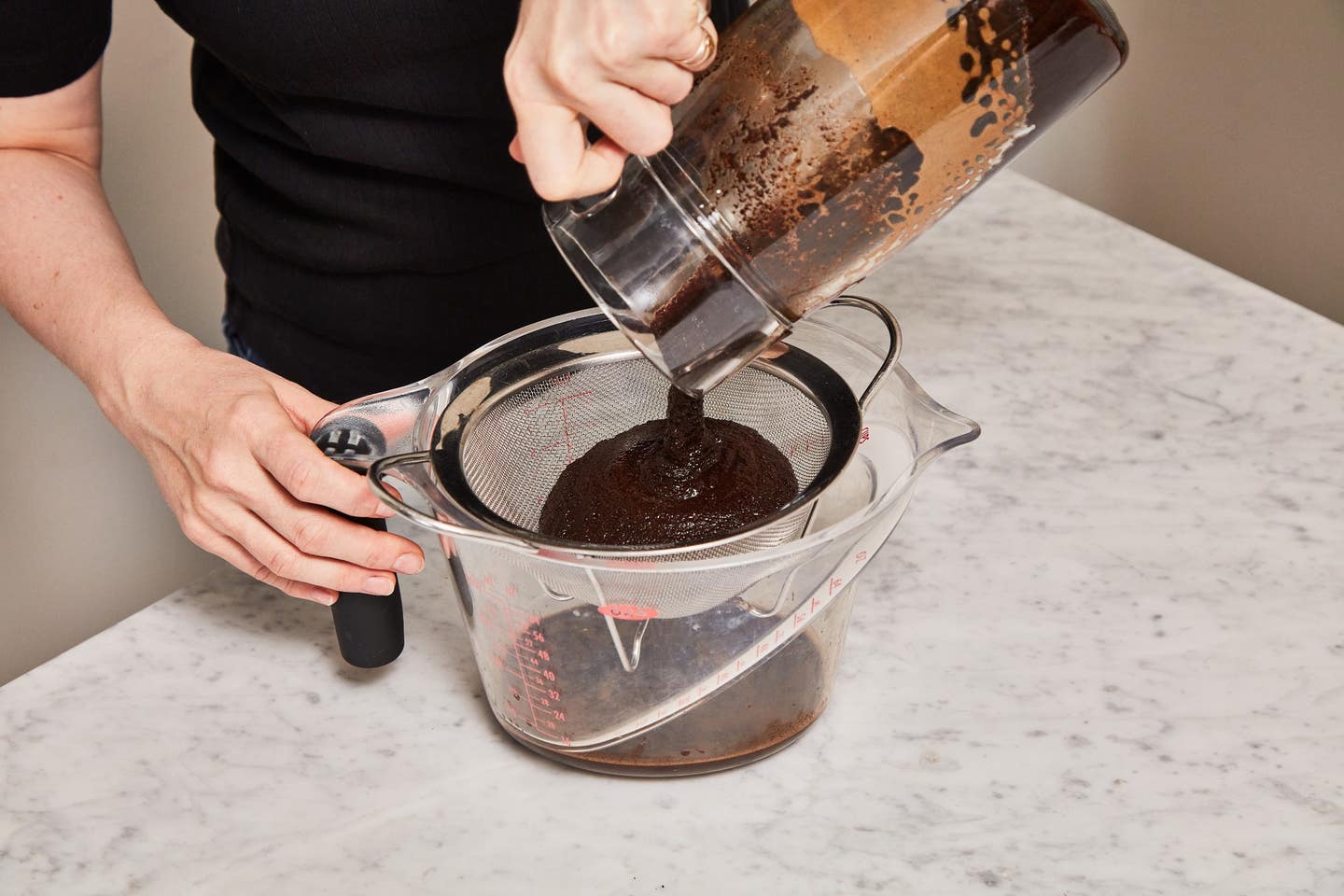
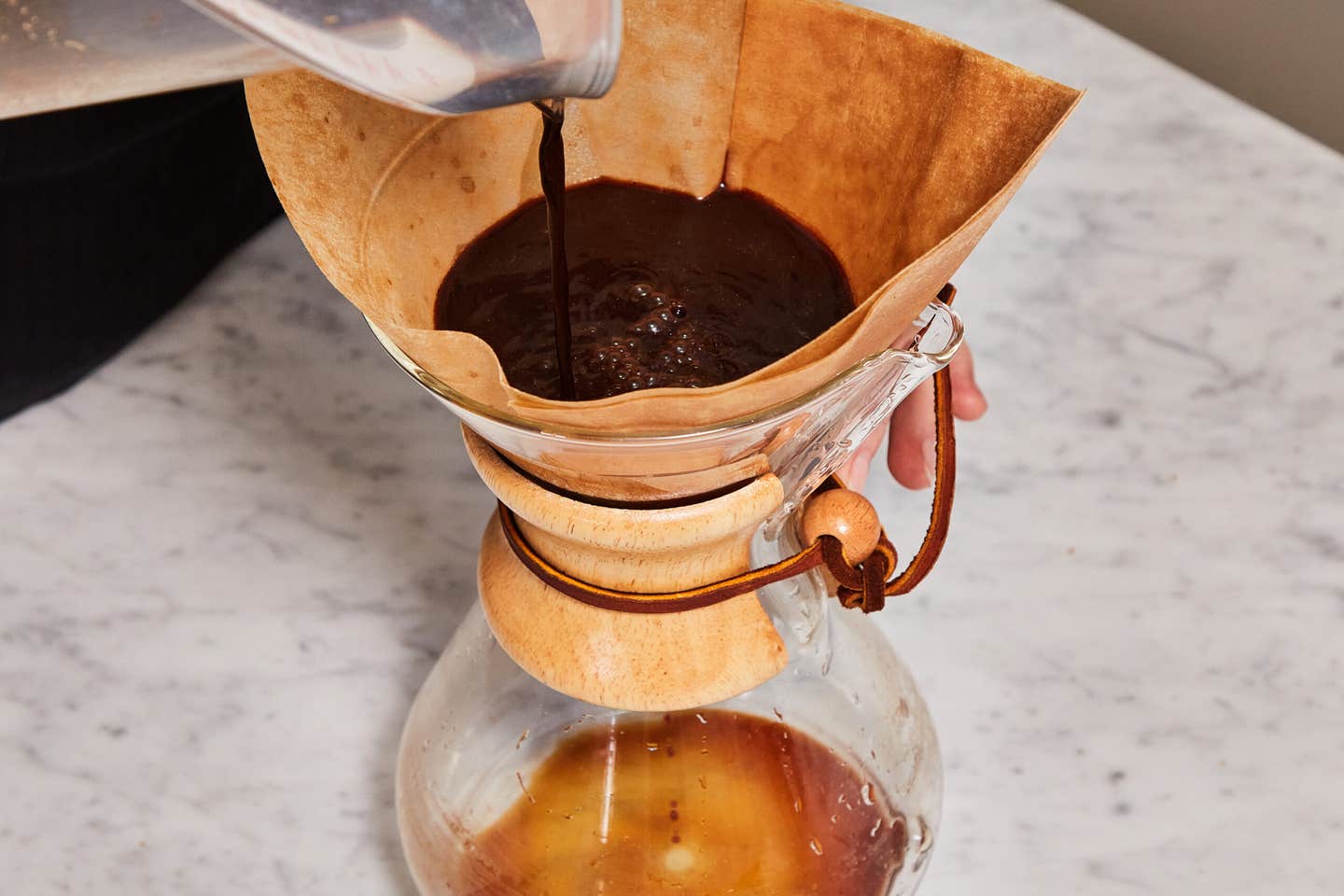
Pour the liquid—grounds and all—through either a filter-lined Chemex or a cheesecloth-lined fine-mesh sieve set over a 4-cup measuring cup. A coffee grounds cleaning scoop is helpful here.
Step 5: Dilute the cold brew and serve.
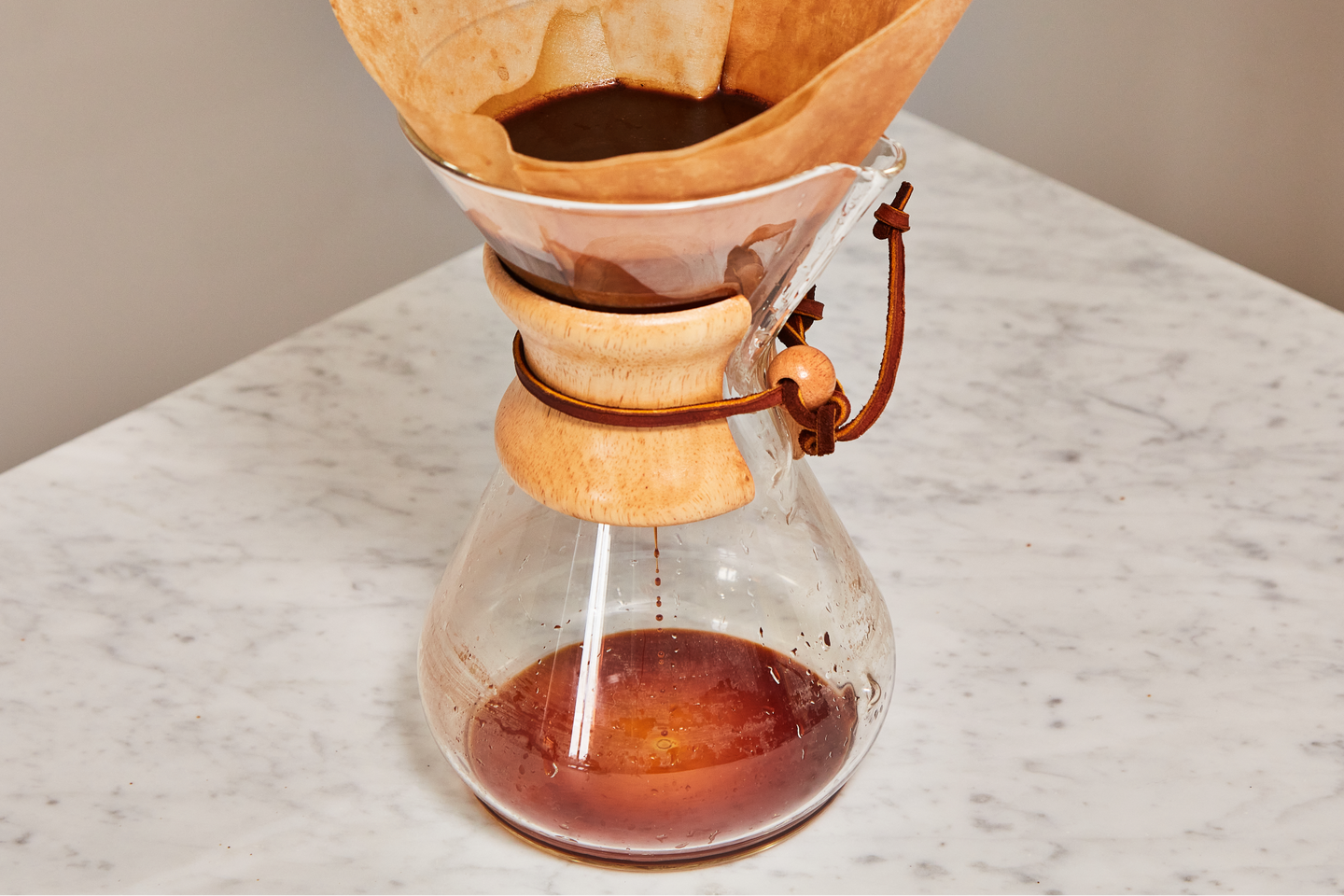
Transfer the strained liquid to a pitcher if desired. Depending on the strength of your cold brew, you may wish to dilute it. This can be a 1:1 water-to-coffee ratio or up to 4:1. Pour the diluted concentrate over ice, and add milk or your creamer of choice.
Keep Reading
Continue to Next Story









